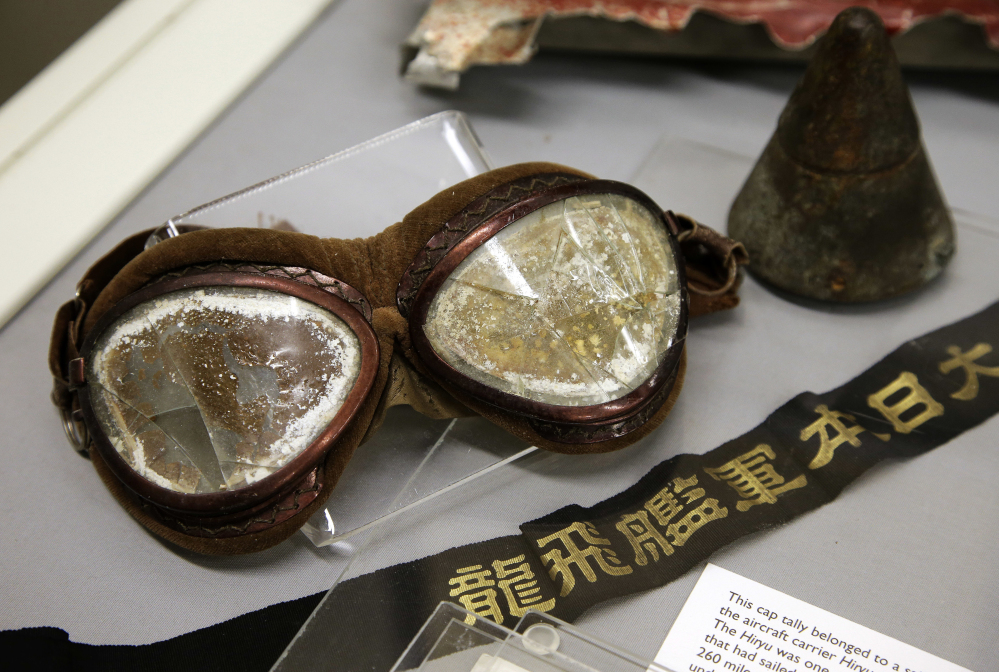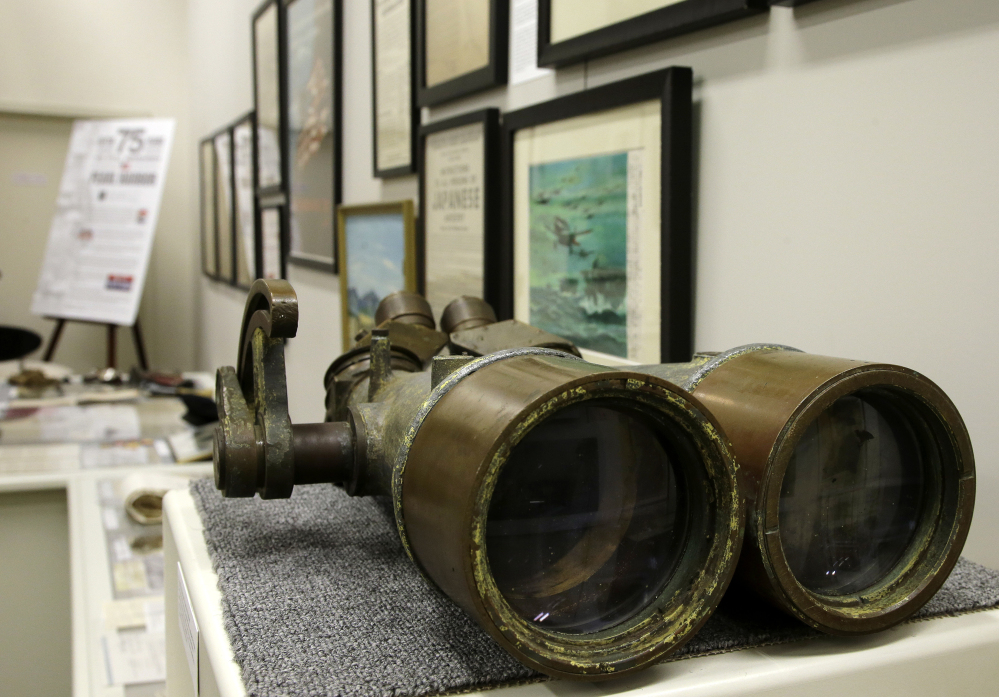NATICK, Mass. — President Franklin D. Roosevelt declared it a “date which will live in infamy” – and three-quarters of a century later, relics from that audacious attack still conjure strong emotions.
A new exhibition commemorating the 75th anniversary of the audacious Pearl Harbor attack that drew the United States into World War II is opening at a private museum west of Boston. The Natick-based Museum of World War II’s “Why We Still Remember” display chronicles the mood in the U.S. and Japan leading up to and after the Dec. 7, 1941, attack by Japan.
Museum founder Kenneth Rendell suggests the themes – including the rising nationalism in Japan and the complacency in the U.S. to the growing threat in a part of the world few Americans understood – should resonate today in the times of the Islamic State group and other foes.
“We underestimated the Japanese terribly. Everyone was paying attention to Europe, no one was paying attention to Asia,” he says. “It explains a lot about why we were caught flat-footed. That’s the importance of learning from history. It’s having respect for the enemy.”
The exhibition, which opened Saturday and runs through Jan. 7, 2017, features artifacts evoking the imperialistic ambitions of Japan in the years leading up to the attack, when Japanese news accounts and propaganda celebrated victories over China in the two nations’ battles in the 1930s.
Those pieces are contrasted with the island paradise of hula girls and sandy beaches captured in photographs taken by U.S. servicemen stationed at Pearl Harbor, which is located just west of Honolulu, and is the headquarters of the Pacific Fleet.
Then there is the attack itself. It involved more than 300 Japanese fighter planes and bombers and killed more than 2,000 Americans, wounded more than 1,000 others, and destroyed or damaged scores of U.S. warships and aircraft.
A glass display holds a small piece of a Japanese plane shot down in the battle, as well as a copy of the first hastily typed distress message sent out from the naval base.
“AIRRAID ON PEARL HARBOR X THIS IS NO DRILL,” it reads.
Other items on display include a large pair of binoculars from the bridge of the USS Arizona. The badly bombed battleship sank in the attack, killing more than 1,000 officers and crew members.
On the exhibition walls, the outrage and sorrow of U.S. newspaper headlines is contrasted with the euphoria and exultation expressed in Japanese postcards, photos and newspapers at the time.
The exhibition also reflects on the heightened fear and anger over Japanese living in America, and the experiences of Japanese families forced into internment camps.
Through photos, letters and other personal effects, it spotlights the story of Tom Kasai, a Los Angeles-area resident who served in the U.S. Army while his wife and parents were relocated to a camp in Arizona.
Kasai was wounded serving in France and awarded the Purple Heart, which is included in the display along with his uniform and other medals.
As visitors complete the exhibition, they’re confronted with an assortment of buttons, pins, stamps and other keepsakes produced in the wake of the attack.
All bear the national rallying cry: “Remember Pearl Harbor.”
Send questions/comments to the editors.




Comments are no longer available on this story